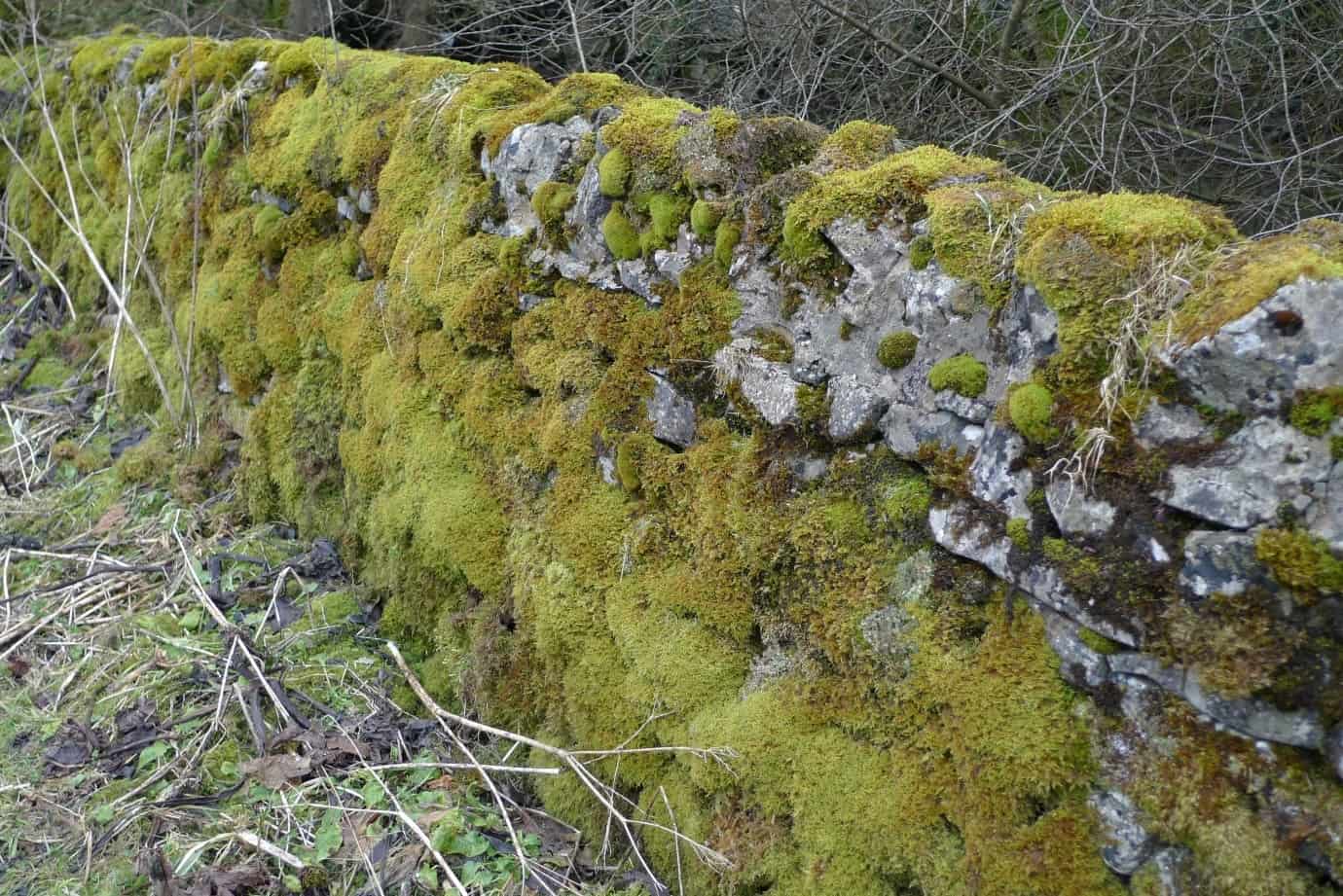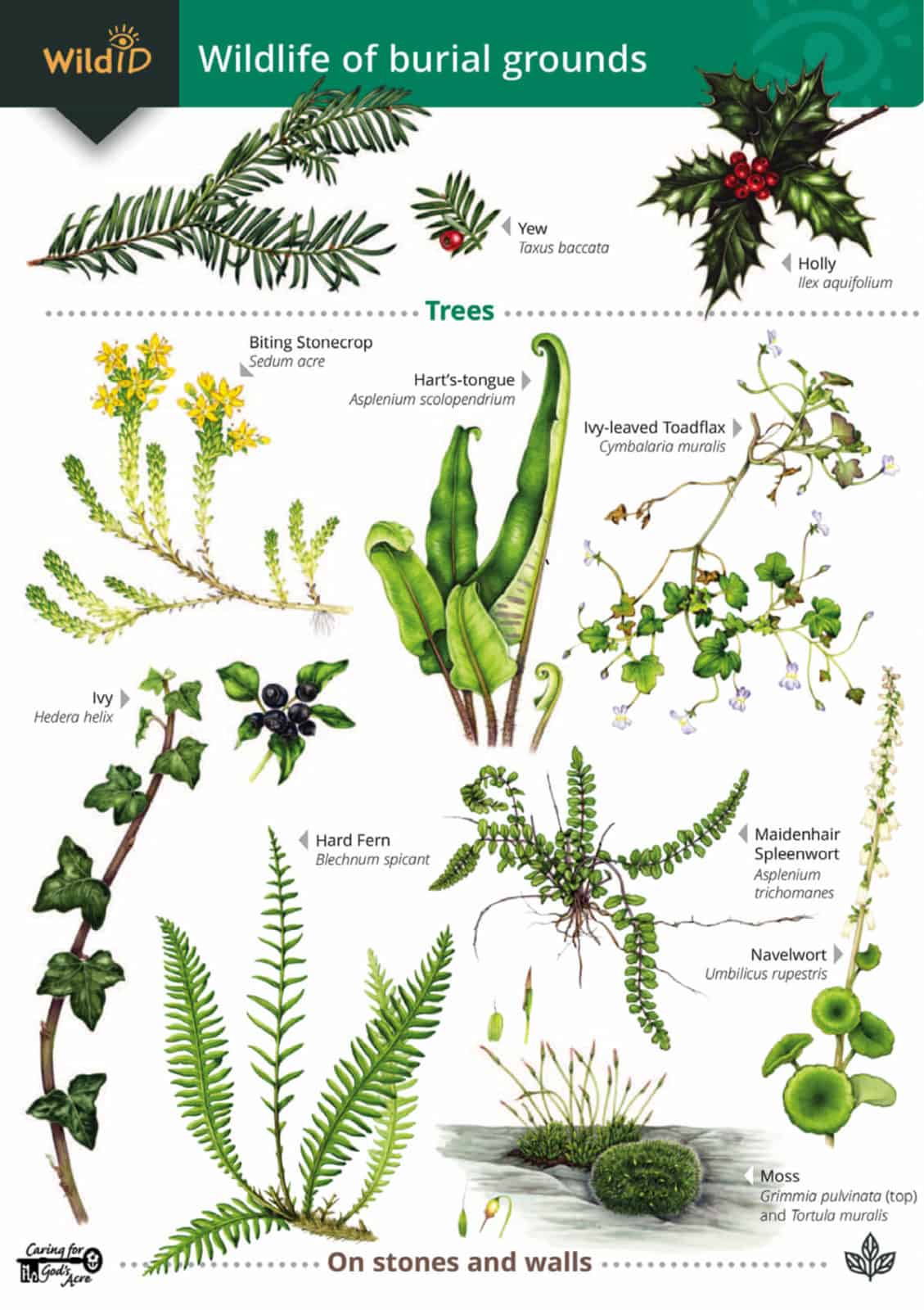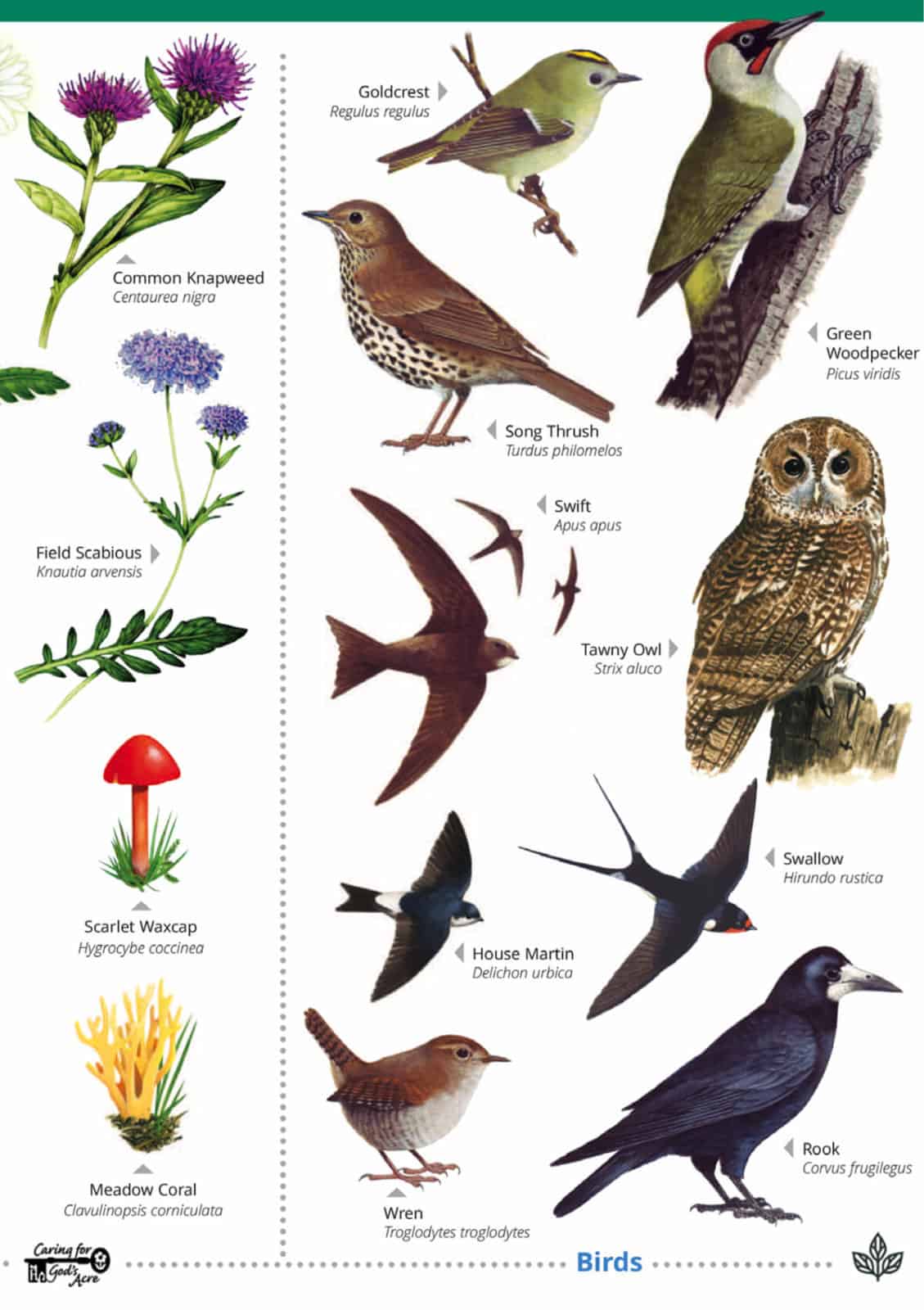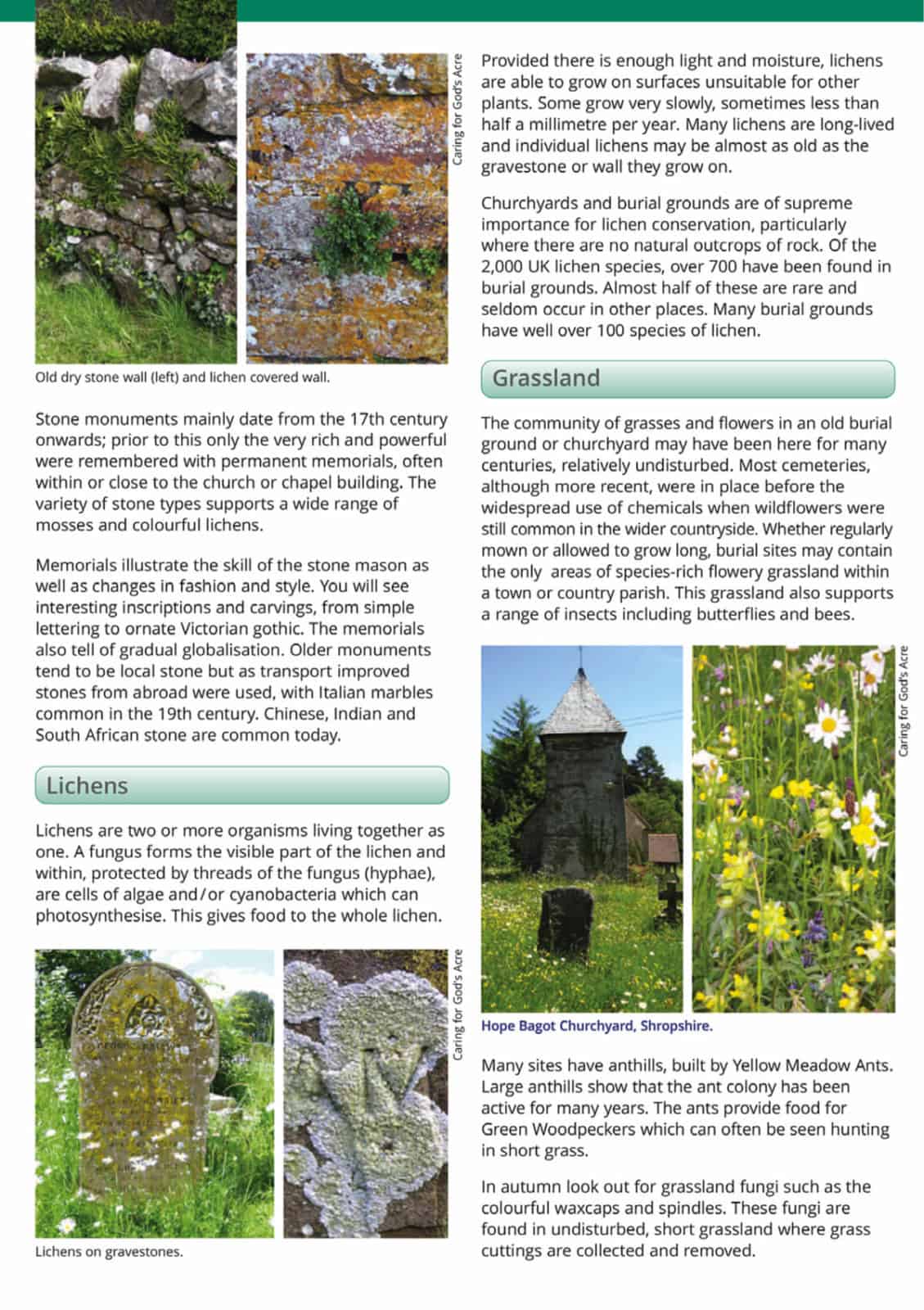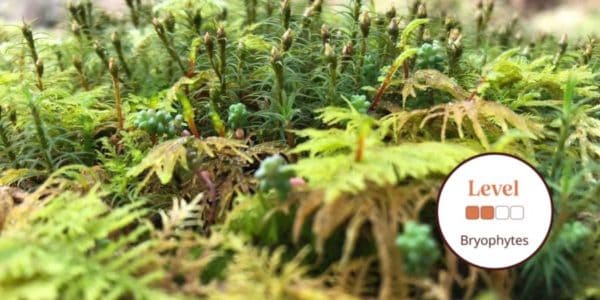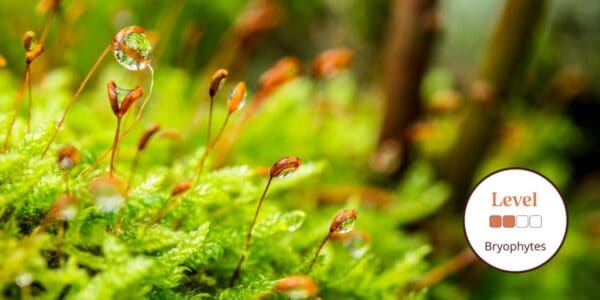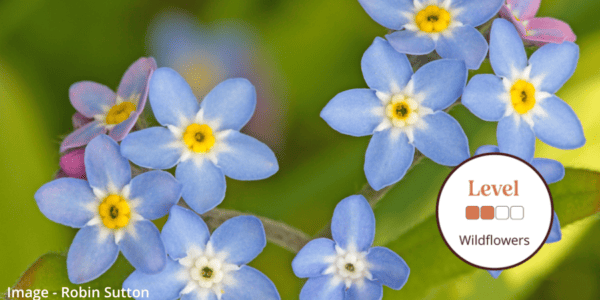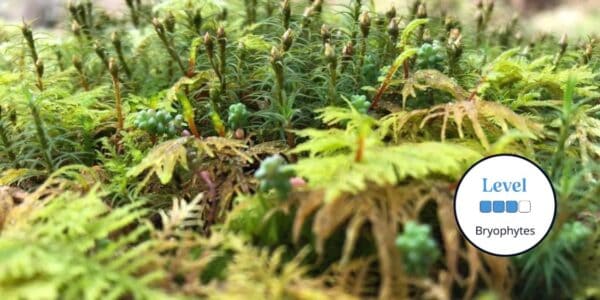Wildlife of burial grounds guide
FSC Wildlife of burial grounds guide features 46 plants and animals of these special places.
There are over 20,000 churchyards, cemeteries and burial grounds all across the UK. Many have become living sanctuaries for wildlife. But equally important are the built structures, from carved memorials and monuments to medieval stone crosses, lychgates and mausoleums.
- Ancient yew trees: perhaps more than 800 years old. Familiar, but in fact the veteran and ancient Yew trees of British churchyards are now of global importance.
- Stonework: after the Yew tree, the next oldest part of a burial site is usually the boundary wall. Old stone walls act like rock outcrops, a habitat which may be rare in the local area. Ferns, mosses and lichens will have colonised over hundreds of years, creating a rich mix of colours and textures. Crevices in a drystone wall are used by small birds and lizards. Lime mortar attracts a range of lime-loving plants and lichens that are rare nearby.
- Flower-rich grassland: the community of grasses and flowers in an old burial ground reflects a habitat which may have vanished elsewhere in the local area. Although soil disturbance will have occurred through digging, the grassland is relatively undisturbed compared to land outside the boundary wall. This grassland can support a range of insects, including butterflies and bees. Many sites have anthills, built by Yellow Meadow Ants. In turn the ants provide food for Green Woodpeckers.
This guide was co-created with Caring for God’s Acre.

